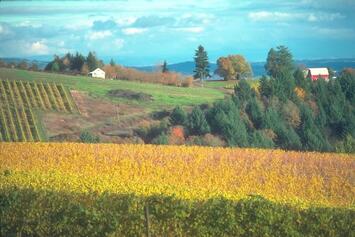
The Department of Agriculture’s latest Census of Agriculture has generated new fears about “disappearing farm lands.” The census found that the United States had 22 million (2.8 percent) fewer acres of farm lands in 2022 than in 2017 and 40 million (4.3 percent) fewer acres than in 2012. The census is conducted every five years in years ending in a 2 or a 7.
Oregon Public Broadcasting responded to the release by reporting that “Oregon continues to lose farmlands” which “raises red flags for some agricultural land conservation advocates.” However, a closer look at available data is needed before panicking.
Comparing the 2012 and 2022 censuses, Oregon farm lands declined by more than 1 million acres over ten years. However, comparing the 2010 and 2020 population censuses, the number of acres of urbanized lands grew by only about 200,000, or 20 percent of the “lost” farm acres. Where did the other acres go?
We can get some answers to that question from the Department of Agriculture’s Natural Resources Inventory (NRI), which counts acres of croplands, conservation reserves, pasture, range, forests, other rural, developed, federal, and water by state. Like the Census of Agriculture, the Natural Resources Inventory is conducted every five years in years ending in a 2 or 7. Unfortunately, the 2022 data haven’t been released yet, but we can compare 2007, 2012, and 2017 data with census data from the same years.
According to the Natural Resources Inventory, the number of cropland acres in Oregon actually grew between 2012 and 2017. Most of this growth took place by reducing the number of acres in conservation reserves (a federal program giving farmers tax breaks if they leave farm lands untilled). Acres of pasture declined but most of them went into range. (Pasture is land cultivated for livestock grazing; range is uncultivated land used for livestock grazing.)
Total rural acres declined, but only half the decline was due to development. Most of the rest was due to expansion of the federal land base. Though federal lands are essentially rural, the inventory counts them separately from private rural lands. It would be sadly ironic if land-use zealots spread panic about “disappearing farm lands” when much of that disappearance was due to conservation-oriented federal land purchases.
Both the NRI and the Census of Agriculture are based on survey samples and their numbers don’t exactly agree. The census reports a much bigger decline in farm lands than the NRI. Part of that may be in how the two count forest lands. The NRI counts all forest lands while the census only counts forests that are part of farms. In other words, Weyerhaeuser and other private industrial forest lands are included in the NRI but not the census. If farmers sell some of their forests to non-farm owners, the result is a decline in the number of acres of farms even if the land uses haven’t changed.
Read the rest of this piece at The Antiplanner.
Randal O'Toole, the Antiplanner, is a policy analyst with nearly 50 years of experience reviewing transportation and land-use plans and the author of The Best-Laid Plans: How Government Planning Harms Your Quality of Life, Your Pocketbook, and Your Future.
Cover photo: Courtesy, The Antiplanner.












